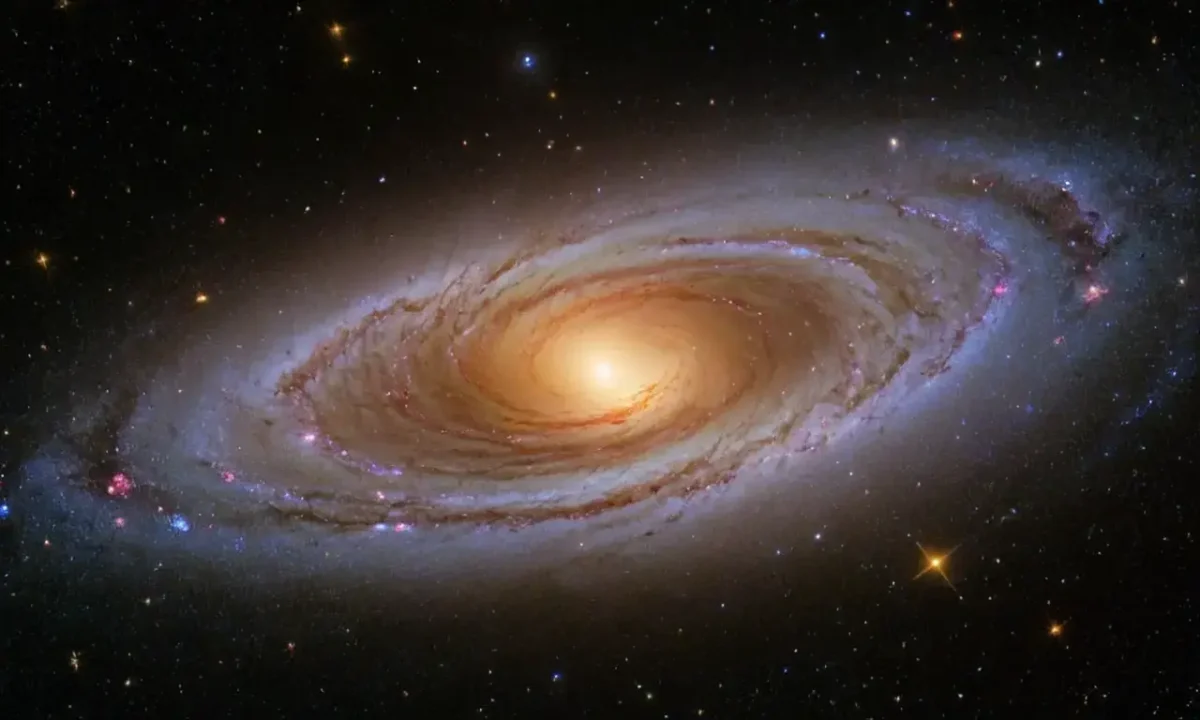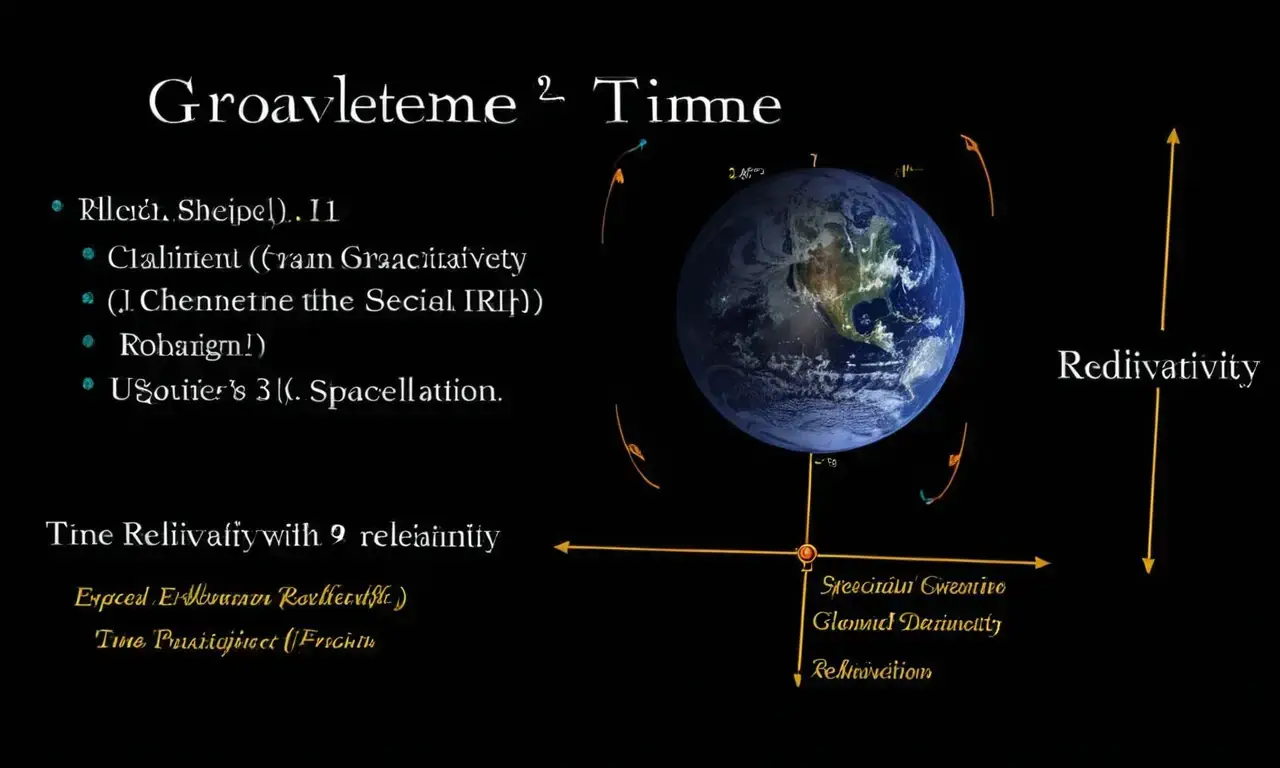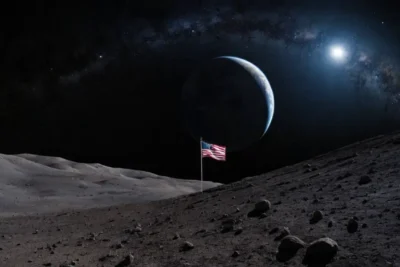
Relativity: Revolutionizing Our Understanding of Spacetime

Relativity is a cornerstone concept in physics that fundamentally altered our understanding of space, time, and gravity. Developed by Albert Einstein, it encompasses two primary theories: special relativity and general relativity. Special relativity deals with the relationship between motion and gravity at speeds close to the speed of light, introducing concepts like time dilation and length contraction. General relativity expands on this by considering gravity as a curvature of spacetime caused by mass and energy. These principles have profound implications for our understanding of the universe, from black holes to the expansion of the cosmos. Understanding these theories opens doors to exploring fascinating scientific phenomena and enriching our appreciation for the wonders of the natural world.
This article delves into the fundamental concepts of special relativity, its impact on our perception of time and space, and how it paved the way for general relativity. We'll explore the key principles of both theories, including time dilation, length contraction, and the equivalence principle. Furthermore, we'll discuss the experimental verification of these theories and their implications for technology and cosmology. By the end of this exploration, you will have a deeper understanding of how relativity revolutionized our view of the universe.
- Special Relativity: The Foundation
- Time Dilation and Length Contraction
- General Relativity: Gravity's Influence
- Equivalence Principle and Gravitational Redshift
- Black Holes, Wormholes, and the Future of Spacetime
- Experimental Verification of Relativity Theories
- Applications in Technology and Cosmology
- Conclusion
Special Relativity: The Foundation
Special relativity emerged from Einstein's quest to reconcile the seemingly incompatible concepts of Newtonian mechanics and Maxwell's theory of electromagnetism. It challenged the long-held belief that time and space were absolute entities, proposing instead a dynamic interplay between them. This revolutionary idea is encapsulated in two postulates:
- The Principle of Relativity: The laws of physics are the same for all observers in uniform motion (i.e., moving at a constant speed in a straight line).
- The Constancy of the Speed of Light: The speed of light in a vacuum (approximately 299,792,458 meters per second) is the same for all inertial observers, regardless of their motion or the motion of the light source.
These seemingly simple postulates have profound consequences. One of the most significant is that time is not absolute. Instead, time intervals are relative to the observer's frame of reference. This means that time can pass at different rates depending on an object's velocity.
Time Dilation and Length Contraction
One of the most striking predictions of special relativity is time dilation. It states that time slows down for objects moving at high speeds relative to a stationary observer. This effect has been experimentally verified numerous times, including in experiments with atomic clocks onboard airplanes.
Imagine two identical clocks: one on Earth and another traveling at a significant fraction of the speed of light. From the perspective of the stationary clock, the clock in motion will appear to tick slower. The faster the object moves, the more pronounced this effect becomes. This phenomenon is due to the fact that time itself is not absolute but rather a dimension interwoven with space.
Another consequence of special relativity is length contraction. It states that objects moving at high speeds appear shorter in the direction of their motion when observed from a stationary frame of reference. Again, this effect becomes more pronounced as the object's velocity increases.
These relativistic effects are not just theoretical curiosities; they have practical implications for technologies like particle accelerators and GPS systems. In these applications, understanding time dilation and length contraction is crucial for accurate measurements and calculations.
General Relativity: Gravity's Influence
While special relativity deals with the relationship between motion and gravity at speeds close to the speed of light, general relativity expands on this by considering gravity as a curvature of spacetime caused by mass and energy. This theory was developed in the early 20th century and revolutionized our understanding of gravity.
General relativity postulates that:
- Gravity is not a force but a consequence of the curvature of spacetime. Massive objects warp the fabric of spacetime around them, causing other objects to move along curved paths.
- The equivalence principle states that the effects of gravity are indistinguishable from those of acceleration. This means that an object in free fall experiences the same forces as an object undergoing constant acceleration.
These principles have profound implications for our understanding of the universe. For example, they explain why light bends around massive objects like stars and galaxies. Additionally, general relativity predicts the existence of black holes, regions of spacetime where gravity is so strong that nothing, not even light, can escape.
Equivalence Principle and Gravitational Redshift

The equivalence principle states that the effects of gravity are indistinguishable from those of acceleration. This means that an object in free fall experiences the same forces as an object undergoing constant acceleration. For example, if you were to drop a ball in a vacuum, it would accelerate downwards due to gravity. However, if you were to place the ball on a rotating platform, it would also experience an acceleration towards the center of the platform.
This principle has profound implications for our understanding of gravity and its effects on spacetime. One consequence is gravitational redshift. It states that light emitted from a massive object experiences a decrease in frequency as it travels away from the object due to the curvature of spacetime caused by the object's mass. This effect can be observed in astronomical observations, where the spectral lines of distant stars appear shifted towards longer wavelengths compared to those on Earth.
Black Holes, Wormholes, and the Future of Spacetime
General relativity also predicts the existence of black holes, regions of spacetime where gravity is so strong that nothing, not even light, can escape. These objects form when massive stars collapse at the end of their life cycle. The event horizon marks the point of no return for anything entering a black hole, beyond which escape is impossible.
Another intriguing prediction of general relativity is the existence of wormholes. These hypothetical tunnels through spacetime could potentially connect distant points in space and time, allowing for faster-than-light travel. However, their existence remains purely theoretical, and there's no concrete evidence to support their existence.
The future of spacetime research continues to be an exciting frontier. As we explore the universe further, new discoveries may shed light on these intriguing concepts and challenge our current understanding of reality.
Experimental Verification of Relativity Theories
Over the past century, numerous experiments have been conducted to test the predictions of special and general relativity. These experiments have provided strong evidence supporting these theories and continue to refine our understanding of the universe.
One such experiment is the Michelson-Morley experiment, which aimed to detect a hypothetical "luminiferous ether" that was thought to permeate space and carry light waves. However, their measurements failed to find any such ether, leading them to conclude that the speed of light in a vacuum is constant regardless of the observer's motion. This result provided strong support for special relativity.
Another notable experiment is the Pound-Rebka experiment, which involved measuring the time dilation of atomic clocks at different altitudes. The experiment showed that time slows down slightly at higher altitudes due to the weaker gravitational field, confirming predictions from special relativity.
Applications in Technology and Cosmology
Relativity has had a profound impact on technology and our understanding of the universe. For example, GPS systems rely heavily on relativistic corrections to account for the effects of both special and general relativity on time dilation and satellite motion. Without these corrections, GPS devices would be inaccurate by several meters per day.
Furthermore, nuclear energy, which powers nuclear power plants and atomic bombs, is based on Einstein's famous equation E=mc². This equation shows that mass can be converted into energy, a concept that has revolutionized our understanding of the universe.
Finally, general relativity plays a crucial role in cosmology. It helps us understand the expansion of the universe and the formation of galaxies and stars. By studying the behavior of light around massive objects like black holes, we gain valuable insights into the fundamental laws of physics.
Conclusion
Relativity is one of the most important theories in modern physics, revolutionizing our understanding of space, time, gravity, and the universe itself. From its predictions about time dilation and length contraction to its implications for black holes and wormholes, relativity continues to inspire new discoveries and push the boundaries of human knowledge. As we continue to explore the cosmos, these concepts will undoubtedly play a crucial role in shaping our understanding of the universe for generations to come.
Leave a Reply





Related Links